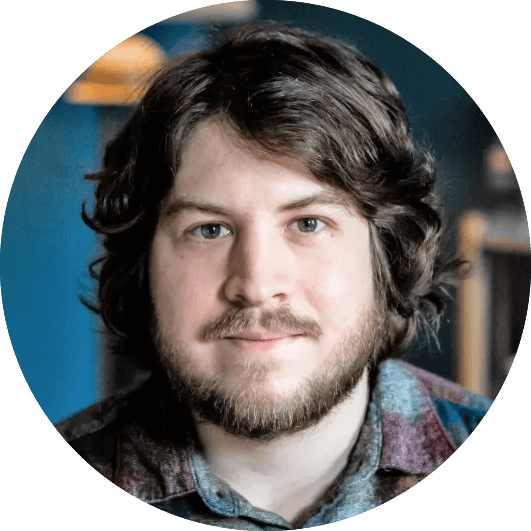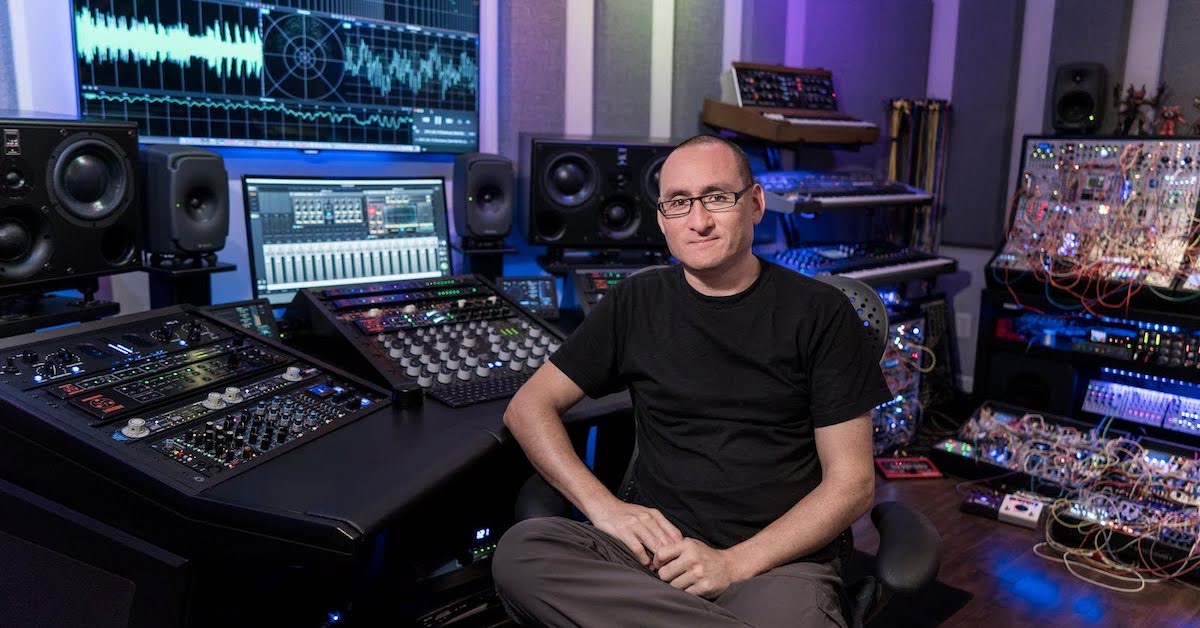How the boundary-pushing sound designer and musician approaches teamwork and finds new tools.
If you’re into sound design and follow social media, there’s a good chance you’ve seen Richard Devine’s colorful modular synth rig lighting up your feed or learned about a unique plugin or processor from one of his bite-sized mini-demos. And even if you haven’t, you’ve certainly heard the Atlanta-based sound designer and experimental musician’s work elsewhere.
Devine has contributed sound design for Google VR apps, music and sound effects for Triple-A games like Cyberpunk 2077 and DOOM, soundtracks for Nike and Coca-Cola commercials, content and presets for Native Instruments, and an Ambisonic sound library for Rode – all while putting out album after album of adventurous, experimental electronic music.
A truly multidisciplinary sound artist, Devine’s work consistently blurs the line between music and sound effects. His curiosity leads him on a never-ending search for new tools and techniques to generate new sounds and textures, from sampling field recordings to “playing” plugins with gestural interfaces and intentionally misusing AI and machine learning (ML) tools. The fact that one of the world’s most forward-thinking tech companies sought out such an unorthodox sound designer bodes well for the future of audio.
Devine caught up with us from his new house in Atlanta where he’s currently building an expanded version of his already impressive home studio/sound design laboratory. In a wide-ranging discussion, Devine delved into his new home studio, how he streamlines his workflow for maximum efficiency, and the inspiration he gets from using and abusing cutting-edge audio tools.
You may not tour as much now, but music has always been a big part of what you do. What are you currently working on?
Richard Devine: I'm still active as a musician. I'm about to release two albums, hopefully next year. I want to mix them in my new studio which is under construction right now, but we're hoping to have it done by the end of this year. We've got a lot more work to do, but it's going to be beautiful. I just bought this house and the basement's enormous, so I have basically ten times the space that I did at my old house.
Like a lot of sound designers, you use your home studio for both work and personal projects. What’s your goal with the new studio?
I needed a bigger space because I wanted to change some things about the way I work. Over time I’ve acquired some pieces of equipment that help me work more efficiently, like the PATCH system and the PATCH DX app. I'm probably going to get the PATCH XT, the 192-channel version. I might get two of those to run in the new studio because I want to do a much bigger version of that system. I want to be able to control everything from the computer and drag and drop any synthesizer or piece of hardware in my racks into a session.
My ultimate goal is to have everything in one system and be able to save configurations for specific situations. Like, if I want to record a specific instrument, I have a chain ready to go with my mic and preamps ready to record and the mics are set up in a room next door so I can record stuff really quickly. I can call up my chain and use hardware and software together, which is kind of neat. I’m really trying to merge those worlds together seamlessly and quickly so that if I have an idea, I can get it out of my head pretty quickly.

Though he mainly works out of his home studio, Devine still manages to play shows (including a recent appearance at the immersive art experience Meow Wolf).
It sounds like efficiency is really important to you. How do you approach a new project with your team?
A lot of times I'll be given a brief, and they’ll typically give me a list of items that they're looking for with really in-depth details of what they want. That includes the timbre of the sounds they want: light, dark, heavy, aggressive, and different adjectives like that. Sometimes they even give me examples of the style of sound that they're looking for, so I generally have a really good idea of what they want.
I always tell people that the worst kind of client is the one who doesn't know what they want. They're like, “I'm coming to you because you're the guy,” but they don't really know what they want, so they have you running in circles and making 10 or 15 different versions of something. Sometimes it's because they're not musicians and it's hard for them to translate the idea in their head into the kind of language that a musician or a sound designer understands. I've run into that several times with clients who just say things like, “Can you make it sound optimistic?” There are so many different ways you can interpret that, so I like working with people who know exactly what they want.
"I'm constantly learning new tools to see if they can help me create new sounds, manipulate sounds easier, or give me something new that I haven't heard before."

Richard Devine’s smaller home studio is equipped for immersive mixing in 7.1.4. In his new studio, he plans to unify all of his equipment and be able to instantly patch any hardware or software into any project.
What helps you stay inspired?
Really it's about just getting educated. I tell people all the time that I'm not really a master of anything; I'm just a student and my studio is my classroom, basically. I'm constantly learning new tools to see if they can help me create new sounds, manipulate sounds easier, or give me something new that I haven't heard before. That's the real pot of gold for me: finding these new tools that can do things that nothing else can. I'm always on the hunt for really unique instruments that do things you just can't do any other way.
What excites you about the future of sound design and audio in general?
Right now I think it's in a weird place with all the new AI and ML stuff that's happening, as well as spatialized audio. There are a lot of things happening all at once in these different areas that are really exciting. AI- and ML-based software is an area that I've been focusing on a lot more lately.
My friend Ben Cantil started a software company that's using machine learning. They have a plugin called Combobulator that takes metadata from an artist and then combines your stuff with theirs in real time. There's a dial that meshes your rhythmic patterns and textural things with theirs, and it has several different knobs that can be modulated. There's a lot happening behind the scenes that make it do what it does, but it's a really interesting idea.
Ben is getting these data sets from all these crazy artists like Mr. Bill and Rob Clouth, who are great friends of mine that make incredible music and are also great sound designers. Those are the people you should be getting your metadata from if you really want some interesting stuff. They have a really cool model where you buy the software and then you buy these metadata packs and the artists get a percentage of the sales.
But for me, I want to misuse these tools. A lot of companies are training their models with popular songs and jazz music, but I want to train them with data sets that don't make any sense. I want to totally confuse the algorithms. I want to feed it stuff it's not expecting. I want to abuse this stuff and misuse it in ways that it's not meant to be used. That's where I think the magic is going to happen.
"No matter how advanced the tools get, the most important thing is what the listener gets back emotionally – how the sounds that you're making enhance the experience and get them to feel something."

Can you give us an example of misusing a tool for creative sound design?
I really love abusing this plugin called XO by XLN Audio. It’s based on machine learning, so you just point it to a folder of sounds and it creates a constellation map with all these different colors representing different instruments that match in timbre. All your hi-hats are yellow, your kick drums are blue, your snares are orange, and you can basically scroll around to find the sound you want. It's great because you're not looking at the file names; you're just sonically ear-hunting for the right thing.
I love gestural interfaces, so I use that a lot – not just for percussion sounds, but for sound effects like whooshes and transitional effects or short bursts and explosions and stuff like that. I have a folder with a couple thousand modular samples I’ve made in the past, and I've made so many cool loops and stuff just by swiping through and recording the output with tools like Audio Hijack. You can create all these new rhythms just by recording gestures. I made a video of that on my Instagram and all these people were freaking out thinking that the software could actually do that.
What should sound designers and audio teams should be thinking about in order to stay relevant as technology advances?
I always tell people that no matter how advanced the tools get, the most important thing is what the listener gets back emotionally – how the sounds that you're making enhance the experience and get them to feel something. I feel like that's the most important thing and I think a lot of people miss that. They get caught up in all the other things along the way, but at the end of the day, you really want to make people feel something and be inspired. That's always been my goal.

Dante Fumo is a Midwest-based sound designer, editor, and mixer specializing in independent film and Dolby Atmos mixing. In his free time, Dante composes electronic music and publishes Harmonic Content, a zine about sound.












